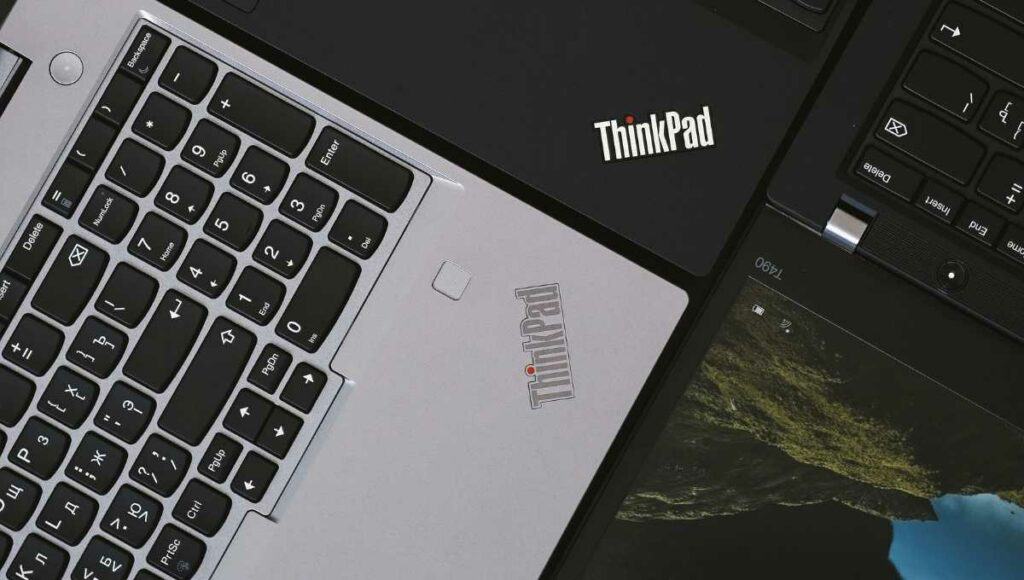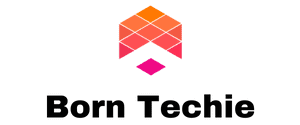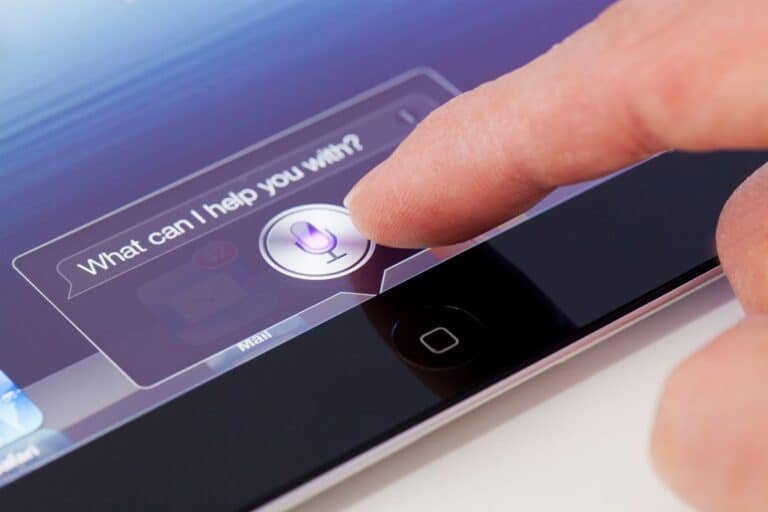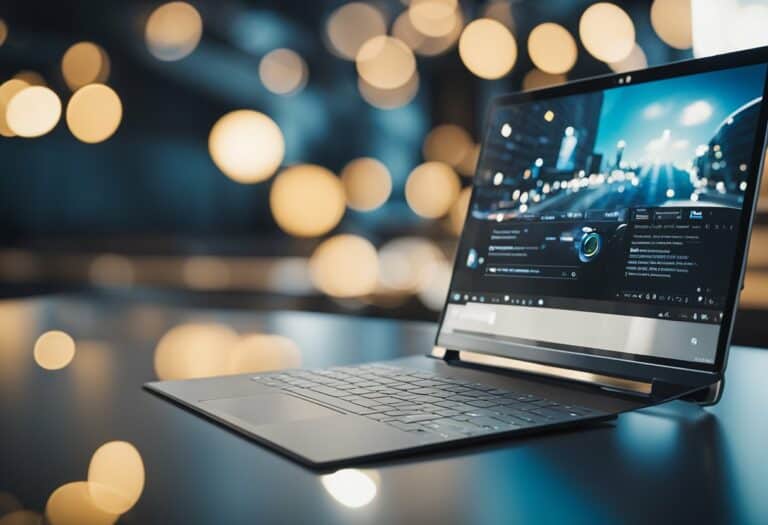Can You Use ThinkPad Docking Station with MacBook? Explained.
When it comes to using a ThinkPad docking station with a MacBook, many people are left wondering if it’s possible. The answer is yes, it is possible to use a ThinkPad docking station with a MacBook, but there are some important things to keep in mind. In this article, we’ll explore the compatibility of ThinkPad docking stations with MacBooks, as well as their connection and charging capabilities, display and monitor support, software and drivers requirements, Ethernet and data transfer capabilities, compatibility with other devices and peripherals, storage and card reader support, and how they compare to other docking station brands.

Compatibility of ThinkPad Docking Station with MacBook
ThinkPad docking stations are designed to work with a wide range of devices, including laptops, tablets, and smartphones. While they were originally designed for use with ThinkPad laptops, they are also compatible with other laptop brands.
This includes MacBooks, which can be connected to a ThinkPad docking station using a USB-C to USB-A adapter. However, not all ThinkPad docking stations are compatible with MacBooks, so it’s important to check the specifications of the docking station before making a purchase.
Connection and Charging Capabilities
ThinkPad docking stations offer a range of connection and charging capabilities, including USB, Ethernet, HDMI, and DisplayPort.
When using a ThinkPad docking station with a MacBook, it’s important to ensure that the docking station has the necessary ports to connect to the MacBook.
Additionally, some ThinkPad docking stations may not be able to charge a MacBook, so it’s important to check the specifications of the docking station before making a purchase.
Key Takeaways
- ThinkPad docking stations are compatible with MacBooks, but it’s important to check the specifications of the docking station before making a purchase.
- When using a ThinkPad docking station with a MacBook, it’s important to ensure that the docking station has the necessary ports to connect to the MacBook.
- Some ThinkPad docking stations may not be able to charge a MacBook, so it’s important to check the specifications of the docking station before making a purchase.
Compatibility of Thinkpad Docking Station with Macbook
When it comes to using a Thinkpad docking station with a Macbook, compatibility can be a bit tricky.
While Thinkpad docking stations are designed to work with Thinkpad laptops, they are not necessarily compatible with Macbooks. However, there are some options available for those who want to use a Thinkpad docking station with their Macbook.
Compatibility with USB-C and Thunderbolt 3/4
One of the main factors to consider when determining compatibility between a Thinkpad docking station and a Macbook is the type of port the Macbook has.
Many newer Macbooks, including the Macbook Pro and Macbook Air, have USB-C ports, which are compatible with Thunderbolt 3 and 4. Thinkpad docking stations that support USB-C and Thunderbolt 3/4 may be compatible with these Macbooks.
Compatibility with M1 and M1 Pro/Max Processors
Another factor to consider is the type of processor the Macbook has. Macbooks with M1 processors may have limited compatibility with docking stations that are not specifically designed for them.
However, newer docking stations that support M1, M1 Pro, and M1 Max processors may be compatible with these Macbooks.
Compatibility with macOS
The operating system running on the Macbook can also impact compatibility with a Thinkpad docking station.
While many docking stations are designed to work with multiple operating systems, it’s important to check the manufacturer’s specifications to ensure that the docking station is compatible with macOS.
Options for Compatibility
If a Thinkpad docking station is not compatible with a Macbook, there are still options available. One option is to use a USB-C dock or USB-C docking station that is specifically designed for Macbooks. Another option is to use a third-party adapter to connect the Macbook to the docking station.
Summary
In summary, compatibility between a Thinkpad docking station and a Macbook can be a bit tricky. It’s important to consider the type of port, processor, and operating system when determining compatibility.
While there are options available for those who want to use a Thinkpad docking station with their Macbook, it’s important to check the manufacturer’s specifications to ensure compatibility.
Connection and Charging Capabilities
When it comes to connecting a ThinkPad docking station to a MacBook, there are a few factors to consider, such as port compatibility and charging capabilities.
One of the key considerations is the type of ports available on the docking station and the MacBook. The ThinkPad docking station typically comes with USB-A, USB-C, and Thunderbolt 3 (TB3) ports. Meanwhile, the MacBook may have USB-C or Thunderbolt 3 (TB3) ports.
USB-C is a versatile port that can handle charging, data transfer, and video output. Thunderbolt 3 (TB3) is a faster version of USB-C that supports higher data transfer speeds and can also handle video output.
If the MacBook has a USB-C port, it can be connected to the docking station using a USB-C to USB-C cable. If it has a Thunderbolt 3 (TB3) port, it can be connected to the docking station using a Thunderbolt 3 (TB3) cable.
Another important consideration is the charging capabilities of the docking station. Some docking stations come with a power supply that can charge the MacBook while it is connected to the docking station. This is known as Power Delivery (PD) charging.
If the docking station does not come with a power supply, the MacBook will need to be charged separately. In this case, the docking station can still be used for data transfer and video output.
Here is a summary of the connection and charging capabilities of a ThinkPad docking station with a MacBook:
- The docking station typically comes with USB-A, USB-C, and Thunderbolt 3 (TB3) ports.
- The MacBook may have USB-C or Thunderbolt 3 (TB3) ports.
- A USB-C to USB-C cable can be used to connect a MacBook with a USB-C port to the docking station.
- A Thunderbolt 3 (TB3) cable can be used to connect a MacBook with a Thunderbolt 3 (TB3) port to the docking station.
- Some docking stations come with a power supply that can charge the MacBook while it is connected to the docking station (Power Delivery or PD charging).
- If the docking station does not come with a power supply, the MacBook will need to be charged separately.
Display and Monitor Support
When it comes to using a ThinkPad docking station with a MacBook, one of the key concerns is display and monitor support.
Fortunately, both ThinkPad and MacBook devices support a range of external displays and display modes, making it possible to use them together seamlessly.
Single Display Mode
One of the simplest ways to use a ThinkPad docking station with a MacBook is to connect a single external display to the dock.
This can be done using either an HDMI or DisplayPort cable, depending on the available ports on the monitor and dock. Once connected, the MacBook should automatically detect the external display and mirror its screen to it.
Extended Mode
For users who need more screen real estate, the extended display mode is a great option. This allows users to connect two or more external displays to the ThinkPad docking station and use them in tandem with the MacBook’s built-in display.
This mode is particularly useful for multitasking and working on multiple projects at once.
Clamshell Mode
Another option for using a ThinkPad docking station with a MacBook is to use clamshell mode. This mode allows users to close the MacBook’s lid and continue working on an external display using only a mouse and keyboard.
This can be useful for users who prefer a larger external display or who want to use the MacBook as a desktop replacement.
Overall, using a ThinkPad docking station with a MacBook is a straightforward process that offers a range of display and monitor options. Whether using a single external display or multiple displays in extended mode, users can enjoy a seamless experience with both devices.
Software and Drivers Requirements
To use a ThinkPad docking station with a MacBook, certain software and drivers are required. The specific requirements depend on the model of the docking station and the MacBook being used.
Software Installation
Firstly, the MacBook must have the appropriate software installed to be compatible with the docking station. The software can usually be downloaded from the docking station manufacturer’s website. For example, Lenovo provides a download page for its ThinkPad docking stations here.
Drivers
In addition to the software, drivers may also be required for the docking station to function properly with the MacBook.
The drivers can also be downloaded from the manufacturer’s website. It is important to ensure that the correct drivers are installed for the specific docking station model and MacBook being used.
MacOS Compatibility
Another important consideration is the compatibility of the docking station with the MacBook’s operating system.
Some docking stations may only be compatible with certain versions of MacOS. It is important to check the manufacturer’s website for compatibility information before purchasing a docking station.
Bugs and Troubleshooting
It is possible that bugs or compatibility issues may arise even when all the necessary software and drivers are installed.
In such cases, it may be necessary to troubleshoot the issue or contact the manufacturer for assistance. It is important to keep the software and drivers up to date to avoid any potential issues.
In summary, to use a ThinkPad docking station with a MacBook, the MacBook must have the appropriate software and drivers installed, and the docking station must be compatible with the MacBook’s operating system.
It is important to check the manufacturer’s website for compatibility information and to keep the software and drivers up to date to avoid any potential issues.
Ethernet and Data Transfer Capabilities
ThinkPad docking stations offer a variety of ports and data transfer capabilities. One of the most important ports is the Ethernet port, which allows for a wired internet connection.
The Ethernet port on a ThinkPad docking station can be used to connect to a network or to a modem for internet access. It is also possible to connect to other devices on the network, such as printers or other computers.
The data transfer capabilities of a ThinkPad docking station depend on the type of port being used. For example, the USB 3.0 ports have a maximum data transfer rate of 5 Gbps, while the Gigabit Ethernet port has a maximum data transfer rate of 1 Gbps.
It is important to note that the actual data transfer rate may be lower than the maximum rate due to various factors, such as the speed of the connected device and the quality of the cables being used.
When it comes to bandwidth, the Gigabit Ethernet port on a ThinkPad docking station offers a much higher bandwidth than a standard Ethernet port.
This means that data can be transferred much faster and more efficiently, making it ideal for tasks that require high-speed data transfer, such as video streaming or large file transfers.
In summary, a ThinkPad docking station provides a variety of ports and data transfer capabilities, including Ethernet and Gigabit Ethernet ports, USB 3.0 ports, and more.
These ports and capabilities allow for fast and efficient data transfer, making it an ideal choice for professionals who need to work with large files or transfer data quickly.
- The Gigabit Ethernet port has a maximum data transfer rate of 1 Gbps.
- The USB 3.0 ports have a maximum data transfer rate of 5 Gbps.
- The actual data transfer rate may be lower than the maximum rate due to various factors.
- The Gigabit Ethernet port offers a much higher bandwidth than a standard Ethernet port.
- ThinkPad docking stations are ideal for tasks that require high-speed data transfer, such as video streaming or large file transfers.
Compatibility with Other Devices and Peripherals
The ThinkPad docking station is designed to work with a variety of devices and peripherals. It is compatible with laptops, desktops, workstations, and tablets from different manufacturers.
However, the compatibility of the docking station with other devices and peripherals may vary depending on the model and specifications.
When it comes to MacBooks, the compatibility of the ThinkPad docking station is limited. While the docking station may work with some MacBooks, it is not guaranteed to work with all models. Users may need to install additional drivers or software to ensure compatibility.
It is recommended to check the specifications of the docking station and the MacBook before attempting to use them together.
For Windows laptops and desktops, the ThinkPad docking station is generally compatible. The docking station provides a convenient way to connect multiple peripherals to a laptop or desktop, including external displays, keyboards, mice, and USB devices. The docking station also supports charging for some laptops.
In addition to laptops and desktops, the ThinkPad docking station can also be used with tablets and workstations. The docking station provides a simple way to connect a tablet or workstation to multiple peripherals, including external displays, keyboards, and USB devices.
When it comes to peripherals and accessories, the ThinkPad docking station supports a wide range of devices, including external hard drives, printers, scanners, and cameras.
The docking station also supports USB-C hubs, which can be used to connect even more devices to the docking station.
Overall, the ThinkPad docking station is a versatile and convenient accessory for users who need to connect multiple devices and peripherals to their laptop or desktop.
While compatibility may vary depending on the device and peripherals being used, the docking station is designed to work with a wide range of devices and provide a seamless user experience.
- Compatible with laptops, desktops, workstations, and tablets from different manufacturers
- Limited compatibility with MacBooks, may require additional drivers or software
- Generally compatible with Windows laptops and desktops, supports charging for some laptops
- Supports a wide range of peripherals and accessories, including USB-C hubs
Storage and Card Reader Support
When it comes to using a ThinkPad docking station with a MacBook, one of the concerns users may have is whether the docking station supports storage and card reader functions. The good news is that most ThinkPad docking stations support storage and card reader functions, including SD card readers.
One thing to keep in mind is that the speed of the SD card reader may vary depending on the type of SD card used. ThinkPad docking stations usually support UHS-I and UHS-II SD cards. UHS-II SD cards offer faster transfer speeds than UHS-I cards. So, if you need to transfer large files frequently, it may be worth investing in a UHS-II SD card.
It’s also worth noting that some MacBook models may require an adapter to connect to the docking station’s SD card reader. For example, newer MacBook models only have USB-C ports, so you may need a USB-C to USB-A adapter to connect to the docking station’s USB-A port.
Here are some key points to keep in mind when it comes to storage and card reader support with a ThinkPad docking station and a MacBook:
- Most ThinkPad docking stations support storage and card reader functions, including SD card readers.
- The speed of the SD card reader may vary depending on the type of SD card used. UHS-II SD cards offer faster transfer speeds than UHS-I cards.
- Some MacBook models may require an adapter to connect to the docking station’s SD card reader.
- If you need to transfer large files frequently, it may be worth investing in a UHS-II SD card.
In summary, if you need to use a ThinkPad docking station with a MacBook and want to transfer files using the docking station’s SD card reader, it’s important to make sure the docking station supports SD card readers and to consider the speed of the SD card reader and the type of SD card you plan to use.
Thinkpad Docking Stations Versus Other Brands
Thinkpad docking stations are designed to work seamlessly with Lenovo Thinkpad laptops. However, many users wonder if they can use a Thinkpad docking station with a MacBook.
While Lenovo does not officially support using their docking stations with MacBooks, there are third-party docking stations available that work with both Thinkpads and MacBooks.
Other Brands of Docking Stations
There are several other brands of docking stations available on the market, including Satechi, Hyper, Plugable, and OWC Thunderbolt 3 Dock. Each brand offers different features and compatibility options.
Satechi offers a range of docking stations that work with both MacBooks and PCs. Their docking stations feature a variety of ports, including USB-C, HDMI, and Ethernet.
Hyper offers docking stations that are compatible with both MacBooks and PCs, with features such as 4K HDMI output and USB-C charging.
Plugable offers a range of docking stations that are compatible with both MacBooks and PCs, with features such as dual 4K HDMI output and USB-C charging.
OWC Thunderbolt 3 Dock offers a range of docking stations that are compatible with both MacBooks and PCs, with features such as dual 4K display support and Thunderbolt 3 connectivity.
Comparison Table
The following table compares the features of Thinkpad docking stations with those of other brands:
| Brand | Compatibility | Ports | Display Support | Charging |
|---|---|---|---|---|
| Lenovo Thinkpad | Thinkpad laptops | Various | Various | Yes |
| Satechi | MacBooks and PCs | USB-C, HDMI, Ethernet | Up to 4K | Yes |
| Hyper | MacBooks and PCs | USB-C, HDMI | Up to 4K | Yes |
| Plugable | MacBooks and PCs | USB-C, HDMI | Up to 4K | Yes |
| OWC Thunderbolt 3 Dock | MacBooks and PCs | Thunderbolt 3, USB-C, HDMI | Up to 4K | Yes |
Conclusion
While Lenovo Thinkpad docking stations are designed to work with Thinkpad laptops, there are several other brands of docking stations available that are compatible with both MacBooks and PCs. Each brand offers different features and compatibility options, so it is important to choose the one that best fits your needs.
Company and Job Opportunities
Lenovo is a multinational technology company that produces and sells a wide range of products, including laptops, desktops, tablets, and smartphones.
The company is known for its high-quality products and has a strong reputation in the technology industry. Lenovo has a variety of job opportunities available for individuals interested in working in the tech industry.
Apple is another well-known technology company that produces and sells a variety of products, including laptops, desktops, smartphones, and tablets. The company is known for its innovative products and has a strong brand reputation.
Apple also has a variety of job opportunities available for individuals interested in working in the tech industry.
If you are interested in working with both Lenovo and Apple products, it is important to note that the two companies use different operating systems.
Lenovo products typically use Microsoft Windows, while Apple products use macOS. However, using a USB-C to USB-A adapter is possible to use a Lenovo docking station with a MacBook. This allows the MacBook to connect to the docking station and use the various ports and features available.
Individuals interested in working with both Lenovo and Apple products may find job opportunities in roles such as IT support, software development, or product management. These roles may require knowledge of both operating systems and the ability to work with different types of hardware and software.
Overall, Lenovo and Apple are both reputable technology companies with a variety of job opportunities available. While the two companies use different operating systems, it is possible to use a Lenovo docking station with a MacBook with the use of an adapter.
Individuals interested in working with both Lenovo and Apple products may find job opportunities in roles such as IT support, software development, or product management.
Future Developments and Updates
As technology continues to advance, updates and improvements are inevitable. While the Lenovo ThinkPad docking station is currently not compatible with the MacBook, there may be future developments to change that.
One potential development is the integration of M2 solid-state drives (SSDs) in the MacBook. M2 SSDs are smaller and faster than traditional SSDs, and they have the potential to improve data transfer rates between the MacBook and the docking station.
Another potential development is the inclusion of SiliconMotion controllers in the MacBook. SiliconMotion controllers are known for their high-speed data transfer capabilities, which could make it easier for the MacBook to communicate with the docking station.
Additionally, the MacBook’s Thunderbolt 2 port may be upgraded in the future to support Thunderbolt 3. Thunderbolt 3 is faster and more versatile than Thunderbolt 2, and it would enable the MacBook to connect to the docking station with ease.
Finally, the MacBook may incorporate Alt Mode technology in the future. Alt Mode allows USB-C ports to support alternate modes, such as DisplayPort and Thunderbolt. This would enable the MacBook to connect to the docking station using a single USB-C cable, simplifying the setup process.
Overall, while the Lenovo ThinkPad docking station is not currently compatible with the MacBook, there may be future developments that change this. As technology continues to advance, it is likely that updates and improvements will be made to both the MacBook and the docking station, making them more compatible with each other.
- Possible future developments include:
- Integration of M2 SSDs in the MacBook
- Inclusion of SiliconMotion controllers in the MacBook
- Upgrading the Thunderbolt 2 port to support Thunderbolt 3
- Incorporating Alt Mode technology in the MacBook
Frequently Asked Questions
Is the ThinkPad docking station compatible with MacBook?
Yes, it is possible to use a ThinkPad docking station with a MacBook. However, compatibility depends on the specific docking station and MacBook model. It is important to check the specifications of both devices before attempting to use them together.
Can I use the ThinkPad USB-C Dock Gen 2 with MacBook Pro?
Yes, the ThinkPad USB-C Dock Gen 2 is compatible with MacBook Pro. However, some features may not be available on the MacBook Pro, such as the ability to charge the laptop through the dock.
Will the ThinkPad Hybrid USB-C with USB-A Dock work with MacBook Pro?
Yes, the ThinkPad Hybrid USB-C with USB-A Dock is compatible with MacBook Pro. However, like the USB-C Dock Gen 2, some features may not be available on the MacBook Pro.
Is it possible to use a docking station with a MacBook Air?
Yes, it is possible to use a docking station with a MacBook Air. However, compatibility depends on the specific docking station and MacBook Air model.
Can a MacBook be connected to a ThinkPad docking station?
Yes, a MacBook can be connected to a ThinkPad docking station. However, it is important to check the compatibility of both devices before attempting to use them together.
Does the ThinkPad docking station only work with ThinkPad laptops?
No, the ThinkPad docking station is not limited to ThinkPad laptops. It can be used with other laptops, including MacBook models, as long as they are compatible with the docking station.
Overall, it is important to check the compatibility of the docking station and MacBook model before attempting to use them together. A list of compatible devices can be found on the manufacturer’s website.






